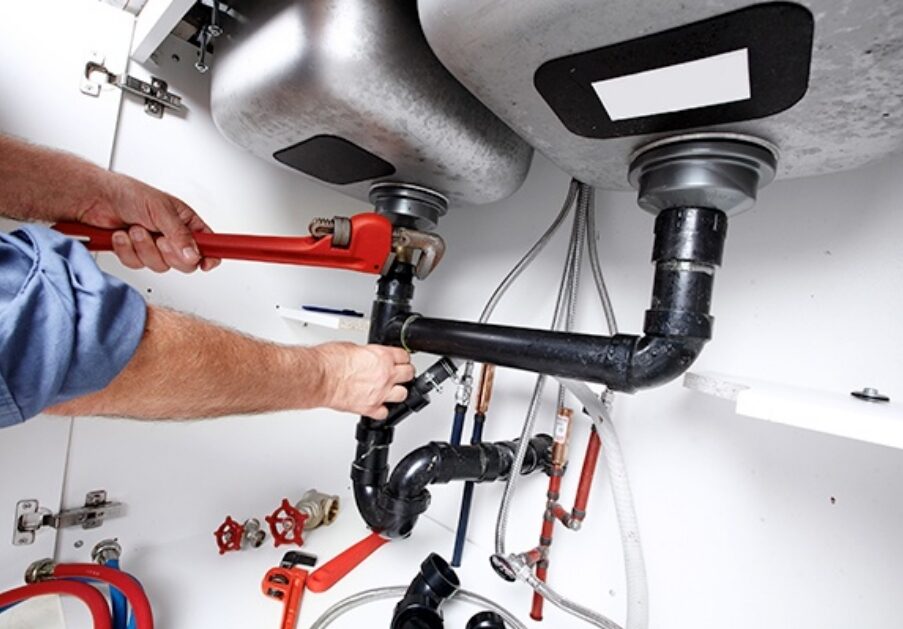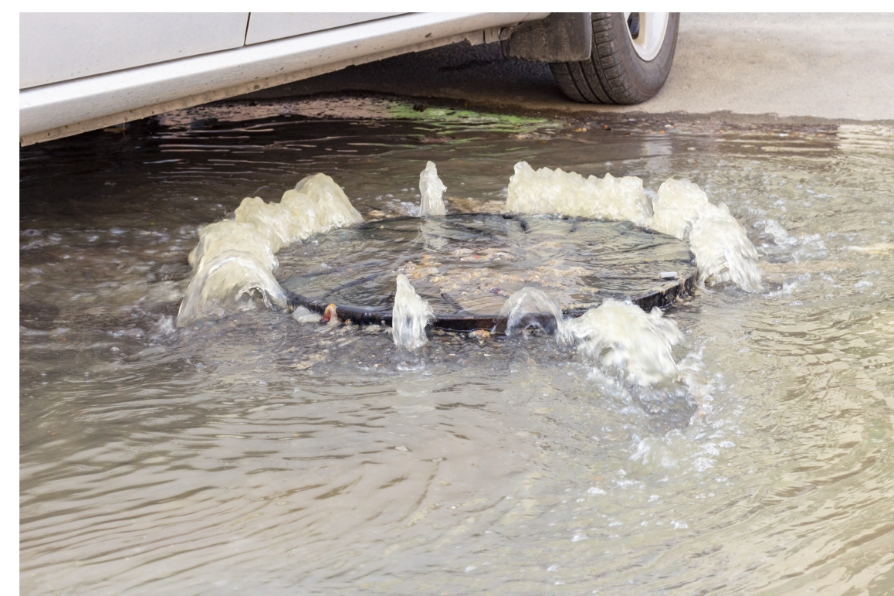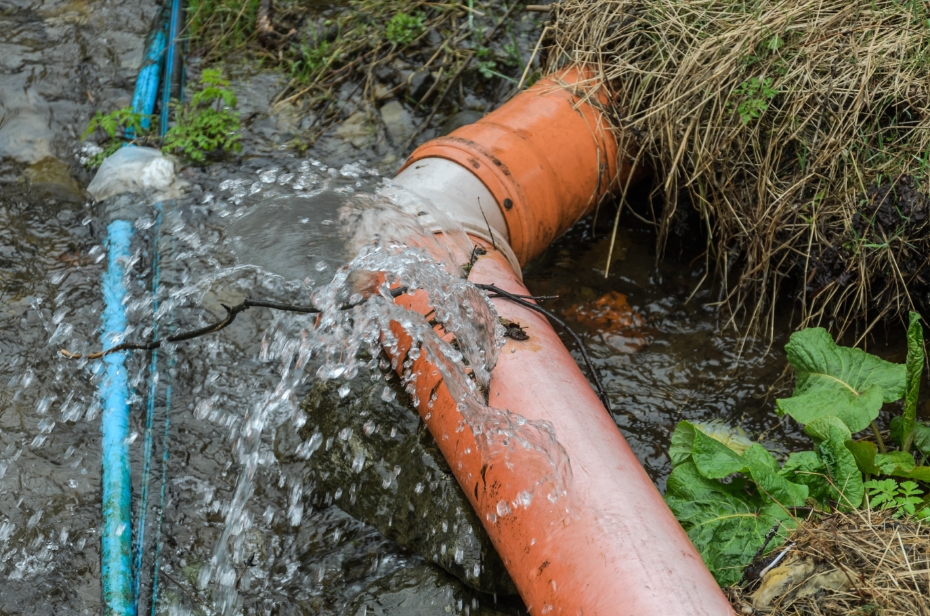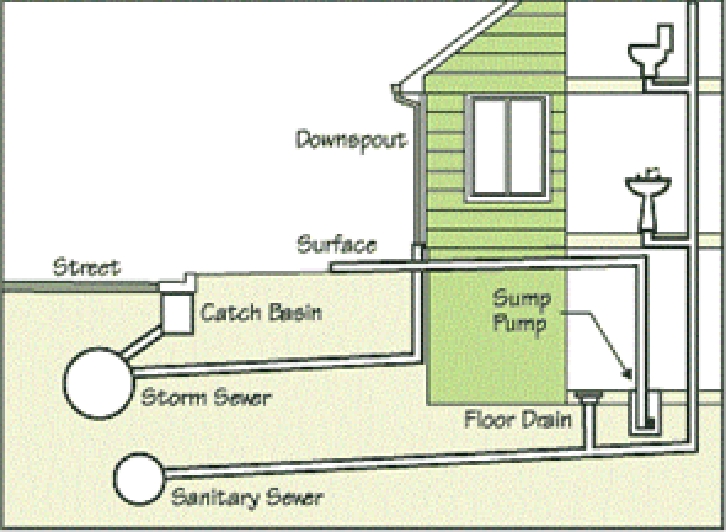What is Inflow & Infiltration?
Water sources that flow into a dedicated sanitary sewer system from groundwater and storm water is called inflow and infiltration.
Sanitary sewers are strictly designed to transport wastewater from sanitary plumbing fixtures, such as toilets, sinks, bathtubs and showers.


Inflow
Inflow occurs from surface water sources that flow directly into the sanitary sewer via a defined route from cross-connections with storm drains, downspouts, and through holes in manhole covers.
Inflow occurs as a result of storm events that contribute to excessive sewer flows such as:
- Rainfall
- Snowfall
- Snow melt

Infiltration
Infiltration is groundwater, that inadvertently enters into the sanitary sewer system through:
- Holes
- Breaks
- Joint failures
- Connection failures
- Other openings
Infiltration quantities often exhibit seasonal variation in response to groundwater levels.
Sources of Inflow & Infiltration
Private Inflow Sources
- Roof downspout connections
- Yard and driveway drains
- Broken or missing sanitary lateral cleanout caps
- Sump pump connections to the sanitary sewer system
These connections are illegal and can add thousands of gallons of storm water into the sanitary sewer system per household during large rain events.
Inflow sources are usually easy to remediate.
Public Right of Way Inflow Sources
Inflow sources within the public right-of-way can include sanitary manhole covers and storm water catch basins that are inadvertently tied into the sanitary sewer.
Private Infiltration Sources
- Broken lateral sewers
- Faulty lateral connections
- Tree root penetration
- Broken cleanouts
These sources can overload the sanitary sewer system and cause sanitary sewer backups into homes and businesses, as well as sanitary sewer overflows (SSOs) to nearby creeks.

How We Find the Sources
Smoke Testing
Involves pumping smoke through sewers from manholes in streets and observing where smoke exits.
The exiting smoke can indicate a broken pipe or identify where roof or foundation drains are improperly connected to the sewer system.


Camera Inspections
Cameras can be robotically sent down sanitary sewer lines and along each side sewer to record a video of sewer conditions.
Inspections can identify breaks, root intrusion, leaking water, and deteriorating conditions.
Dye Testing
Involves pouring non-toxic fluorescent colored dye down roof drains or catch basins to see if that dye makes its way into the sewer.
This provides verification that the storm drainage being tested is directly connected to the sewer.

Fixing Inflow & Infiltration

Redirecting Your Downspouts
- Each downspout on a house can drain approximately 12 gallons of water per minute during a one-inch rainfall
- Downspouts that connect directly to the sanitary sewer system increase the risk of sewer overflow and flooding
- Disconnecting your downspout from the sanitary sewer and redirectly the flow is a simple process that can make a big difference

Backflow Preventer
- A mechanical valve or a check valve will help prevent basement flooding
- A check valve that closes automatically when flow through the sewer line reverses may be installed either outside the house or inside the basement, depending on the plumbing configuration of your home

Basement Plumbing
- The diagram illustrates proper connections to the storm sewer and sanitary sewer system
- The floor drain and waste from the bathrooms and kitchen are going out through the sanitary sewer and the sump pump and downspout are discharging to the storm sewer
- Storm water improperly discharged into a sanitary sewer can causing basements to flood into homes

Submersible Sump Pump Installation
- If your sump pump is connected to any other pipe in your home, it is most likely improperly connected
- The drainage pipe from your sump pump should go from the pump directly outside your home at ground level
- When a sump pump is re-plumbed to pump ground water to the yard or storm sewer, that water no longer takes up space in the sewer system
